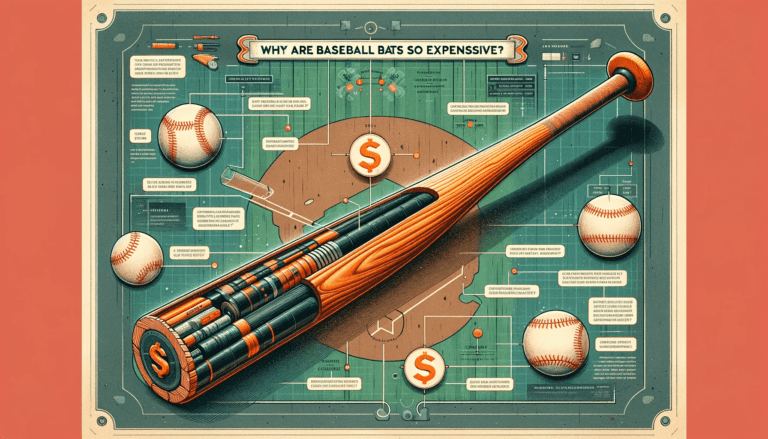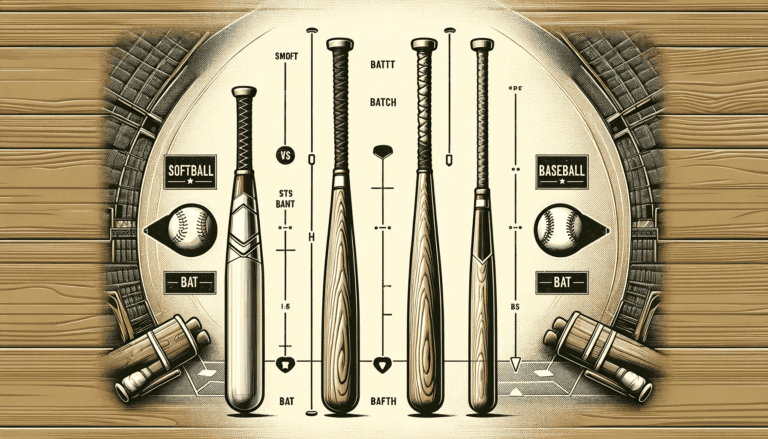How Many Innings in College Baseball: A Complete Guide!
Typically, a college baseball game is comprised of nine innings. However, there are instances where the number of innings may vary. This article will explore those exceptions, providing a clear yet concise explanation without bombarding you with too much detail right away.
Key Takeaways
- College baseball typically plays a standard nine-inning game, reflecting the structure of professional baseball, with exceptions like extra innings in case of a tie or seven-inning doubleheaders.
- Unique NCAA rules like the ‘no collision rule,’ use of aluminum bats, and pitch count restrictions contribute to player safety and influence the strategy and gameplay of college baseball.
- College baseball games can be shortened to seven innings due to factors like the mercy rule, weather disturbances, and special tournament rules, adding strategic complexity to the game.
College Baseball Innings: The Standard Game

Much like a symphony has movements, a college baseball game has innings. But how many innings make up a standard college baseball game? If you’re thinking nine, you’re right on the ball!
The standard number of innings in a college baseball game is indeed nine. The NCAA, the governing body for collegiate sports, aims for college baseball games to consist of nine innings whenever possible.
This nine-inning standard mirrors that of professional baseball games, making it a consistent element of the sport whether you’re watching a college game or an MLB match.
While most college baseball games play out to the full nine innings, exceptions to this rule do exist.
Various factors can alter this standard structure, leading to games that extend beyond nine innings or, in certain scenarios, end before nine innings are completed.
So, while the nine-inning structure is the norm, the beauty of college baseball lies in its flexibility and the unpredictability that these variations bring to the game.
Extra Innings: When Games Extend Beyond Nine
Imagine the tension: it’s the bottom of the ninth inning, the score is tied, and the game hangs in the balance. What happens next? Welcome to the world of extra innings!
When a college baseball game is tied after nine innings, the game doesn’t simply end in a draw.
Instead, it continues into extra innings, adding another layer of suspense to an already thrilling match.
During extra innings, both teams continue to bat and play defense in the same manner as they do in regular innings.
This allows for fair and competitive play to determine the winner. This back-and-forth continues until one team eventually takes the lead.
While it might seem like a rare occurrence, about 10% of regular season college baseball games go into extra innings.
So, if you’re a fan of edge-of-your-seat action, these games are sure to deliver!
College Baseball Doubleheaders: A Unique Scenario
Now, shifting our focus to a distinctive situation in college baseball: doubleheaders. A doubleheader is when two games are played back-to-back by the same two teams on the same day.
These marathon events can lead to unique inning structures, like seven-inning games, depending on scheduling or other factors.
Seven-inning games are allowed during scheduled doubleheaders and on the final day of an intra-conference series in college baseball.
However, it’s important to note that after recent adjustments due to the COVID-19 pandemic, the traditional seven-inning doubleheader format in college baseball tournaments changed back to nine innings.
This shift reflects the dynamic nature of college baseball, where rules can adapt in response to changing circumstances, always keeping fans on their toes.
Read Also: How Many Meters is a Baseball Bat
The Intricacies of College Baseball Rules

Just as an artist needs to understand their palette to create a masterpiece, a college baseball fan needs to understand the sport’s unique rules to fully appreciate the game.
While college baseball follows the Official Baseball Rules, the NCAA has various exceptions that modify the game at the collegiate level.
These modifications include unique regulations like the ‘no collision rule,’ the use of aluminum bats, and pitch count limitations.
Each of these rules adds a unique twist to the game, influencing strategies and gameplay.
Some rules in baseball that promote player safety and affect the game include:
- The ‘no collision rule’ which prohibits baserunners from intentionally colliding with the catcher
- The use of aluminum bats, which can drastically affect the game’s offense and has led to controversy
- Pitch count restrictions, which help protect pitchers from overuse and injury and ensure the sport’s sustainability for the athletes.
We’ll delve deeper into these rules to better comprehend their influence on the regulation game.
The No Collision Rule: Prioritizing Player Safety
In the high-speed realm of college baseball, nothing is more crucial than player safety. One rule that exemplifies this emphasis is the No Collision Rule.
This rule prohibits runners from initiating contact with fielders in the path of plays, aiming to avoid violent collisions at bases.
By disallowing intentional collisions, this rule minimizes the risk of injuries during sliding and tagging situations, keeping the field safe for all players.
The implementation of the No Collision Rule in college baseball has several effects:
- It lowers the risk of concussions and other serious injuries
- It reshapes strategies around base running and tagging, encouraging players to utilize hook slides and swipe tags for safety
- The rule’s enforcement falls on the umpires, and players who violate the rule can be called out or even ejected from the game
- It adds an extra layer of complexity to the game, but ultimately prioritizes player safety above all.
Aluminum Bats: Power and Controversy
The utilization of aluminum bats is another distinguishing feature of college baseball. These metal bats are overwhelmingly preferred in college baseball, offering increased offensive performance. However, they are not without controversy.
The use of aluminum bats has sparked debates over safety concerns and their impact on preparing players for professional levels where wooden bats are standard.
Recognizing these concerns, the NCAA made modifications to aluminum bat standards in 2011. They reduced the maximum allowed exit speed to balance player safety and the integrity of the game.
So, while aluminum bats add an intriguing dynamic to the game, they also serve as a reminder of the careful balancing act between power and safety in college baseball.
Pitch Count Restrictions: Protecting Young Arms
Visualize this: a star pitcher stands on the mound while the crowd watches each throw in anticipation.
It’s a captivating sight, but behind the scenes, there’s a critical rule at play: pitch count restrictions. In college baseball, these limitations restrict pitchers to a maximum of 110 pitches in a single game.
Why such a rule, you ask? Well, it’s all about protecting the players. Pitching a baseball is a physically demanding task, and overuse can lead to injuries.
By implementing pitch count restrictions, the NCAA aims to prevent such issues, ensuring that the sport remains sustainable for the athletes.
It’s yet another example of how college baseball rules are designed with the players’ well-being at heart.
Read Also: How Many Acres in a Baseball Field
Shortened Games: When Seven Innings Become the Norm

While nine innings is the standard in college baseball, there are certain circumstances where games can be shortened to seven innings.
These situations include the implementation of the mercy rule or planned doubleheaders, and even weather-related factors.
The possibility of a shortened game adds another layer of strategy and unpredictability to college baseball.
Some of the scenarios that can occur include:
- Coaches adjusting their game plans
- Players being on their toes for every pitch
- Teams having to make quick decisions and adjustments
- The outcome of the game being determined by a single play or inning
These scenarios keep everyone involved in the game on high alert.
We’ll delve into two significant factors that could result in a seventh inning game: the mercy rule and disturbances due to weather.
The Mercy Rule: Ending a Lopsided Game Early
In the world of college baseball, there’s a unique rule that ensures games remain competitive: the mercy rule.
This rule allows a game to be called off if a team leads by 10 or more runs after seven innings have been played.
Essentially, if one team is significantly ahead, the game can end early, sparing the trailing team from further defeat.
While the mercy rule can shorten a standard nine-inning game, it’s not always applied uniformly.
In certain circumstances, such as conference tournaments or games scheduled for seven innings, the mercy rule can be enacted earlier.
The application of the mercy rule can depend on specific conference rules or agreements between coaches. So, while it’s a tool to expedite games, its application can vary based on the situation.
Weather Factors: Rain Delays and Suspended Games
Mother Nature can be an unpredictable player in the game of college baseball. Inclement weather, darkness, or other adverse conditions can disrupt a game, leading to shortened or suspended games.
For instance, during the SEC baseball conference championship, standard nine-inning games may be shortened to seven innings in response to weather-related disturbances.
An actual occurrence of innings reduction due to weather took place in the 1991 SEC tournament, where certain games were brought down to seven innings.
These weather-related adjustments highlight the adaptability of college baseball, a sport that’s prepared to face and overcome unexpected challenges.
Read Also: How Many Players are on the Field in Baseball
College Baseball Tournaments: Inning Variations and Strategies

Moving beyond regular season games, we enter the thrilling domain of college baseball tournaments.
These high-stakes events, including conference championships and the College World Series, are where the standard nine-inning rule might experience variations due to specific tournament rules or unexpected circumstances such as weather.
In these tournaments, every pitch counts, and every inning matters. Teams adjust their strategies, analyze matchups, and make on-field adjustments to gain a competitive edge.
Let’s dissect these inning variations and strategic shifts in the context of conference championships and the College World Series.
Conference Championships: Unique Inning Rules
Conference championships are a highlight of the college baseball season. These high-stakes games are generally nine innings in length, but they may be shortened under specific circumstances.
For instance, a game could be shortened to seven innings through specific conference rules or by mutual agreement among the teams.
The application of the mercy rule in conference championships is also unique. Some conferences only invoke it during games on Sundays or the final day of the series, often to assist the visiting team with travel considerations.
In tournament situations with tight schedules, conferences may apply the mercy rule to expedite the completion of games.
These unique inning rules add an extra layer of strategy and excitement to conference championships, making them a must-watch for any college baseball fan.
The College World Series: High-Stakes Gameplay
The College World Series is the crown jewel of the NCAA Division I baseball tournament. It’s where the nation’s top teams battle it out for supremacy, and every inning is filled with high-stakes gameplay.
With the standard nine-inning rule in place, teams adjust their strategies and analyze pitching matchups and team performance statistics to gain a competitive advantage.
The high stakes of the College World Series prompt teams to make on-field adjustments, and the intense competition leads to some of the most thrilling baseball moments of the year.
Whether it’s a pitcher throwing a perfect game, a batter hitting a walk-off home run, or a team making an improbable comeback, the College World Series is a showcase of college baseball at its best.
How College Baseball Compares to Other Levels of Play

After exploring the complexities of innings in college baseball, let’s widen our perspective and contrast it with other levels of the sport.
College baseball’s nine-inning structure aligns with professional baseball, making it a consistent element from college to the big leagues. However, the story is different when we look at high school baseball, where games are typically shorter.
This comparison provides a broader perspective of how innings structure varies across different levels of the sport.
It also sheds light on the progressive nature of baseball, where the game’s length and complexity increase as players move from high school to college and eventually to professional leagues.
High School Baseball: A Shorter Game
Within the context of high school baseball, games usually span seven innings, which is two innings fewer than a standard college baseball game.
This shorter format aligns with the developmental nature of high school sports, providing a balanced challenge for young players.
However, variations exist even at this level. Some high school leagues have six-inning games or other alterations based on their specific rules.
Scheduling constraints or tournament structures may also necessitate shorter or modified game lengths, such as five-inning games or adjustments to accommodate multiple games in a single day.
These variations highlight the adaptability of baseball, a sport that adjusts its structure to suit the needs of its players at each level of play.
Professional Baseball: The Major Leagues
Turning our attention to the big leagues, Major League Baseball games are composed of nine innings, reflecting the standard duration of NCAA college baseball games.
This consistency allows players transitioning from college to the pros to adapt more seamlessly, as the structure of the game remains familiar.
Just like in college baseball, if a Major League Baseball game is tied after the standard nine innings, the game continues into extra innings until one team emerges as the winner.
However, to address concerns over game length, Major League Baseball has introduced measures like a pitch clock, similar to what is currently in place in college baseball.
This comparison underlines the interconnectedness of college and professional baseball, with rules and strategies often flowing from one level to the next.
Summary
From the standard nine-inning games to the thrilling extra innings, from unique rules in college tournaments to the differences across various levels of play, we have journeyed through the fascinating world of innings in college baseball.
Understanding the structure of innings is more than just knowing how many innings are in a game; it’s about appreciating the strategies, the rules, and the nuances that make college baseball such an engaging sport.
As we round the bases and head for home, it’s clear that the structure of innings in college baseball is a dynamic aspect, full of variations, strategies, and surprises.
Whether you’re a longtime fan, a budding player, or just someone curious about the sport, understanding the inning structure opens up a new dimension to your appreciation of college baseball.
So next time you watch a college baseball game, you’ll know exactly what’s going on when the seventh inning stretch rolls around, or when a game heads into extra innings. After all, isn’t that part of the fun of being a baseball fan?
Frequently Asked Questions
How many innings are in a typical college baseball game?
A typical college baseball game consists of nine innings.
What happens if a college baseball game is tied after nine innings?
If a college baseball game is tied after nine innings, the game continues into extra innings until one team takes the lead. There is no limit to the number of extra innings that can be played.
When can a college baseball game be shortened to seven innings?
A college baseball game can be shortened to seven innings due to factors like the mercy rule, scheduled doubleheaders, or inclement weather.
What is the No Collision Rule in college baseball?
The No Collision Rule in college baseball prohibits runners from initiating contact with fielders in the path of plays to prevent violent collisions at the bases.
How does the structure of innings in college baseball compare to high school and professional baseball?
In college baseball, games consist of nine innings, similar to Major League Baseball, while high school games are typically seven innings long, which is two innings shorter. Therefore, the structure of innings in college baseball is more similar to professional baseball than high school baseball.







